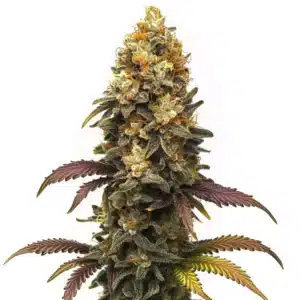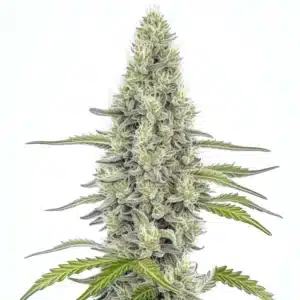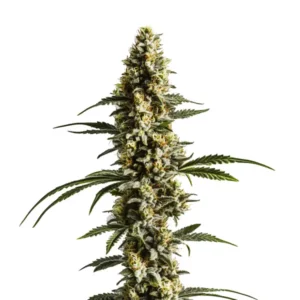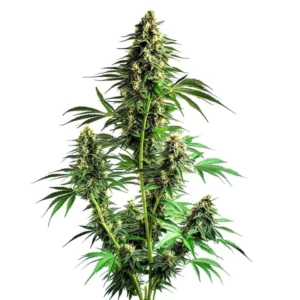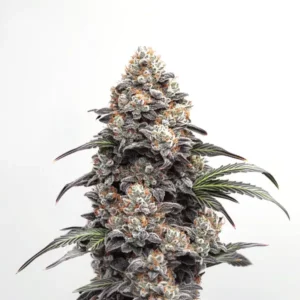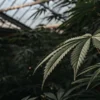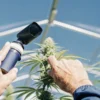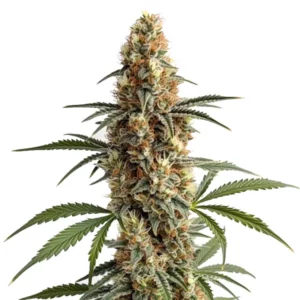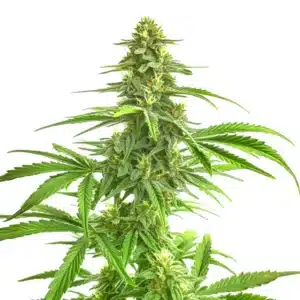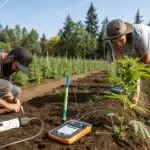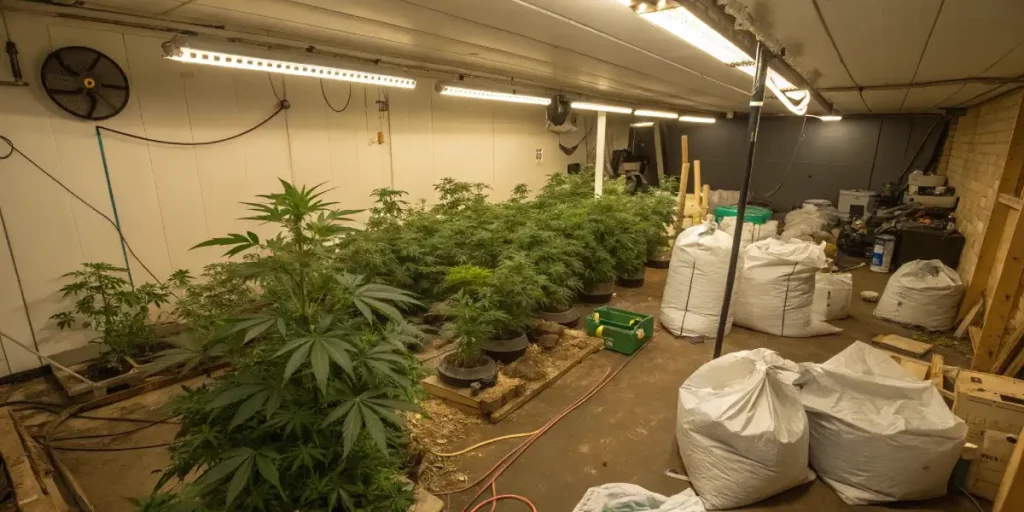
Overfertilizing Cannabis: What It Is and How to Avoid It
Over fertilized weed plants often display clear warning signs that growers should not ignore. These overfertilized cannabis plants show symptoms like leaf tip burn, dark green or waxy leaves caused by excess nitrogen, leaf curling, and stunted growth. In severe cases, nutrient buildup in the buds can lead to a harsh smoke with a chemical taste. To help over fertilized weed plants recover, you must flush the soil with plain water to remove excess salts and nutrients, then adjust your feeding schedule to a lower, balanced concentration and carefully monitor the plant’s recovery.
One common mistake for both new and seasoned cannabis growers is overfertilizing cannabis. When it comes to feeding your plants, more isn’t always better. Giving cannabis plants too much fertilizer can lead to a host of problems, including reduced yield and unhealthy plants. Whether you’re growing strains like the BC Diesel or the potent Wombat, knowing how to properly fertilize is crucial for a successful harvest.
Recommended Strains
Consequences of Overfertilizing Cannabis Plants
Excessive fertilization can lead to a condition known as nutrient burn, a common issue where the leaves turn yellow or brown and start to look burnt. This can severely impact the health of your plant and decrease your yield.
Another consequence is nutrient lockout. This occurs when plants get too much of one nutrient, which prevents them from absorbing others. For example, an excess of nitrogen can lock out potassium, a vital nutrient for bud development.
Besides nutrient burn and lockout, overfertilizing can also lead to nutrient toxicity, where the plant suffers from an overdose of certain nutrients. This can cause stunted growth, leaf curling, and discoloration, and can weaken the plant’s immune system, making it more susceptible to diseases and pests.
Signs of Too Much Fertilizer in Cannabis
Recognizing the signs of overfertilization early is crucial. The symptoms often progress in stages. Initially, the leaves will turn an intense, dark green almost too healthy-looking. If the problem continues, the next signs are often burnt leaf tips and leaves that become stiff and curl downwards into a distinctive ‘eagle claw’ shape. In other cases, the leaves might curl upwards.
Another physical sign you can check for is brittleness. Due to the excess salts, the leaves may become fragile and break easily when touched. If you spot these symptoms, it’s a clear indication that your plant is in distress.
Promos & Deals
How to Fix Overfertilized Cannabis in Soil
If you’ve overfertilized your plant, don’t panic! The first step is to stop fertilizing immediately.
Next, you’ll want to flush your soil with clean, pH-balanced water. This will help to remove any excess nutrients. Make sure to flush with enough water to see some runoff. After flushing, it’s important to let the soil dry out thoroughly before watering again. If possible, remove any visibly damaged leaves to help your plant focus its energy on new growth.
During the flushing process, use water with a slightly acidic pH around 5.5 to help wash away excess salts and rebalance the soil. After flushing, return to regular watering with pH-adjusted water at 6.0.
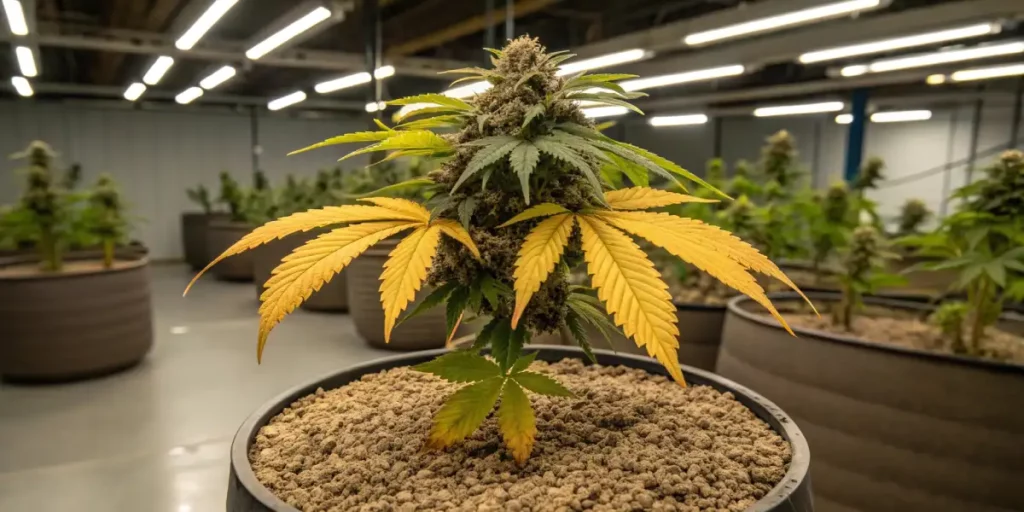
Effects of Overfertilization on Cannabis Yield
Overfertilization can have a significant impact on your final yield, leading to smaller, less potent buds, or even the death of your plant. It can also lead to a harsher smoke and a less enjoyable experience, as excess nutrients can build up in the buds, resulting in a chemical taste. The goal isn’t just to grow cannabis, but to grow healthy, potent cannabis.
Preventing Overfertilization in Cannabis Growth
The best way to deal with overfertilization is to prevent it. Start by carefully following the feeding recommendations for your specific strain.
Before you even mix your nutrients, it’s vital to monitor the salts or Electrical Conductivity (EC) of your source water. Your feeding calculations can be thrown off if the water you start with is already high in dissolved minerals. Perhaps the water you are using is too saline from the start; if it has an initial EC of more than 1.0, it can easily lead to overfertilization when you add your nutrients. This is a common problem in coastal areas, where tap water is often very saline and can burn plants.
To help manage your watering and feeding frequency, consider applying a layer of mulch to your topsoil. Mulch helps the soil maintain its hydration for longer, meaning you won’t need to water (and potentially feed) as often, which can help prevent a gradual buildup of excess nutrients.
Another key to prevention is to regularly check the pH of your soil. An incorrect pH can prevent your plant from properly absorbing nutrients. It’s also beneficial to start with a less-is-more approach; it’s easier to add more nutrients later than to deal with the consequences of overfertilizing.
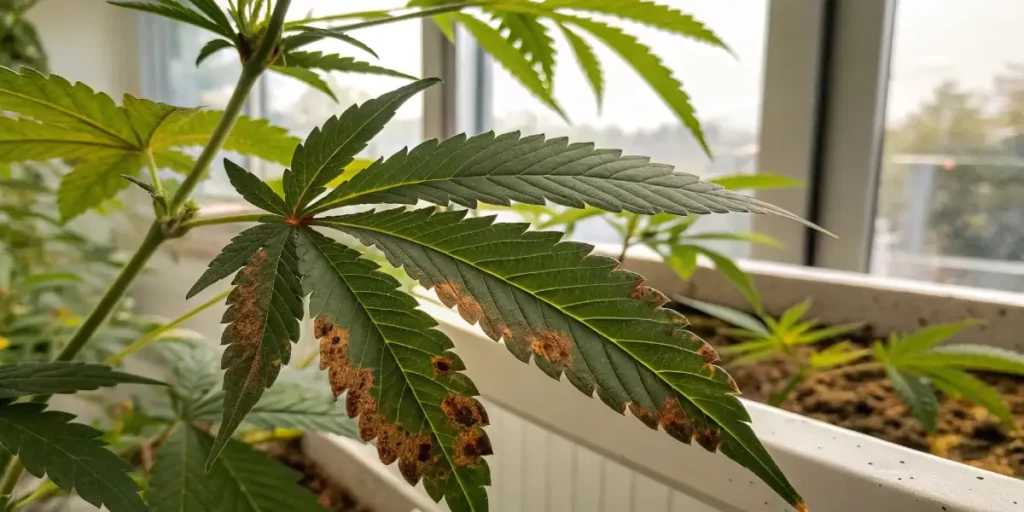
FAQ Section
Can Overfertilized Cannabis Plants Be Saved?
Yes, if you act quickly. Stop all fertilization and flush the soil with clean, pH-balanced water to remove excess nutrients. The key is to act as soon as you see the first signs of trouble.
How Often Should I Fertilize My Cannabis Plants?
The frequency depends on the strain and stage of growth. Plants need more nutrients during their vegetative stage and less during flowering. It’s better to slightly underfeed your plants than to overfeed them. A practical tip is to start by using half the dose recommended by the manufacturer.
Can I Use Any Fertilizer for My Cannabis Plants?
It’s not recommended. Cannabis plants have specific nutrient needs. Using a fertilizer designed specifically for cannabis will ensure your plants get the right nutrients without the risk of excess. Organic fertilizers are often a safer choice as they release nutrients slowly.


